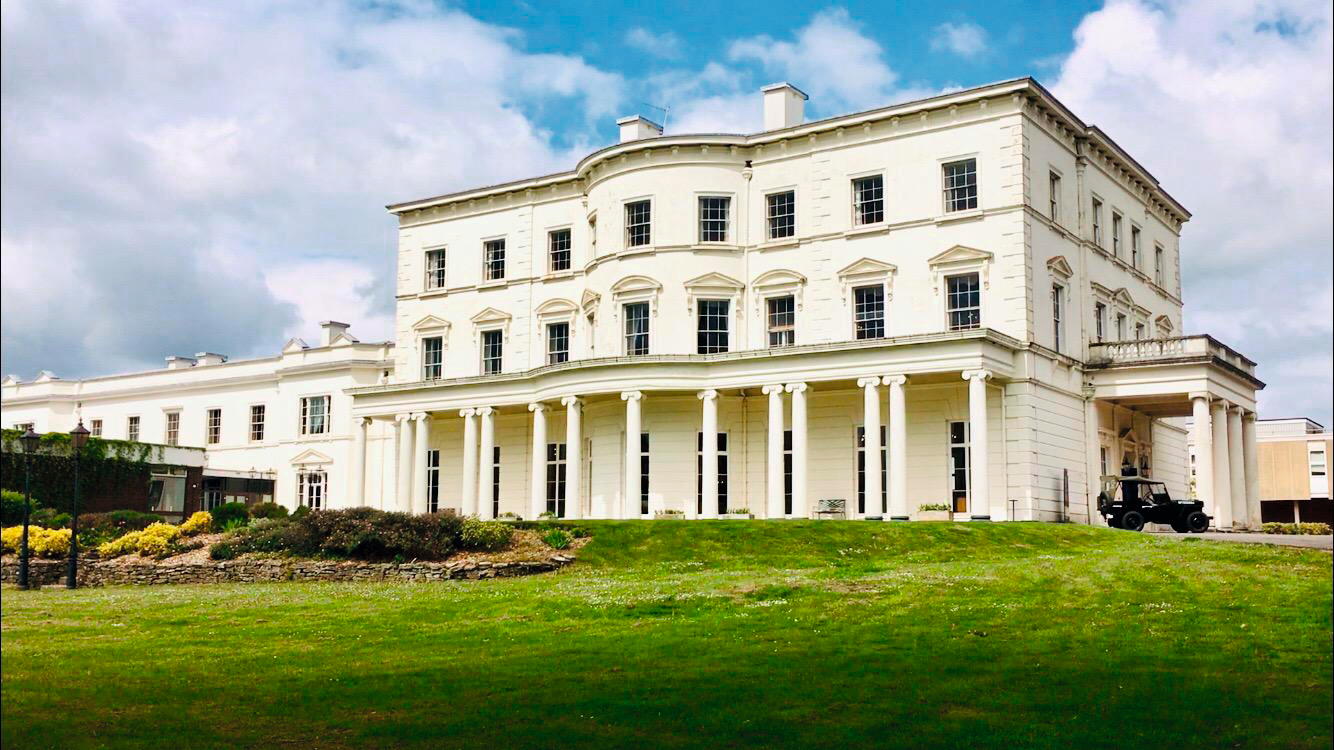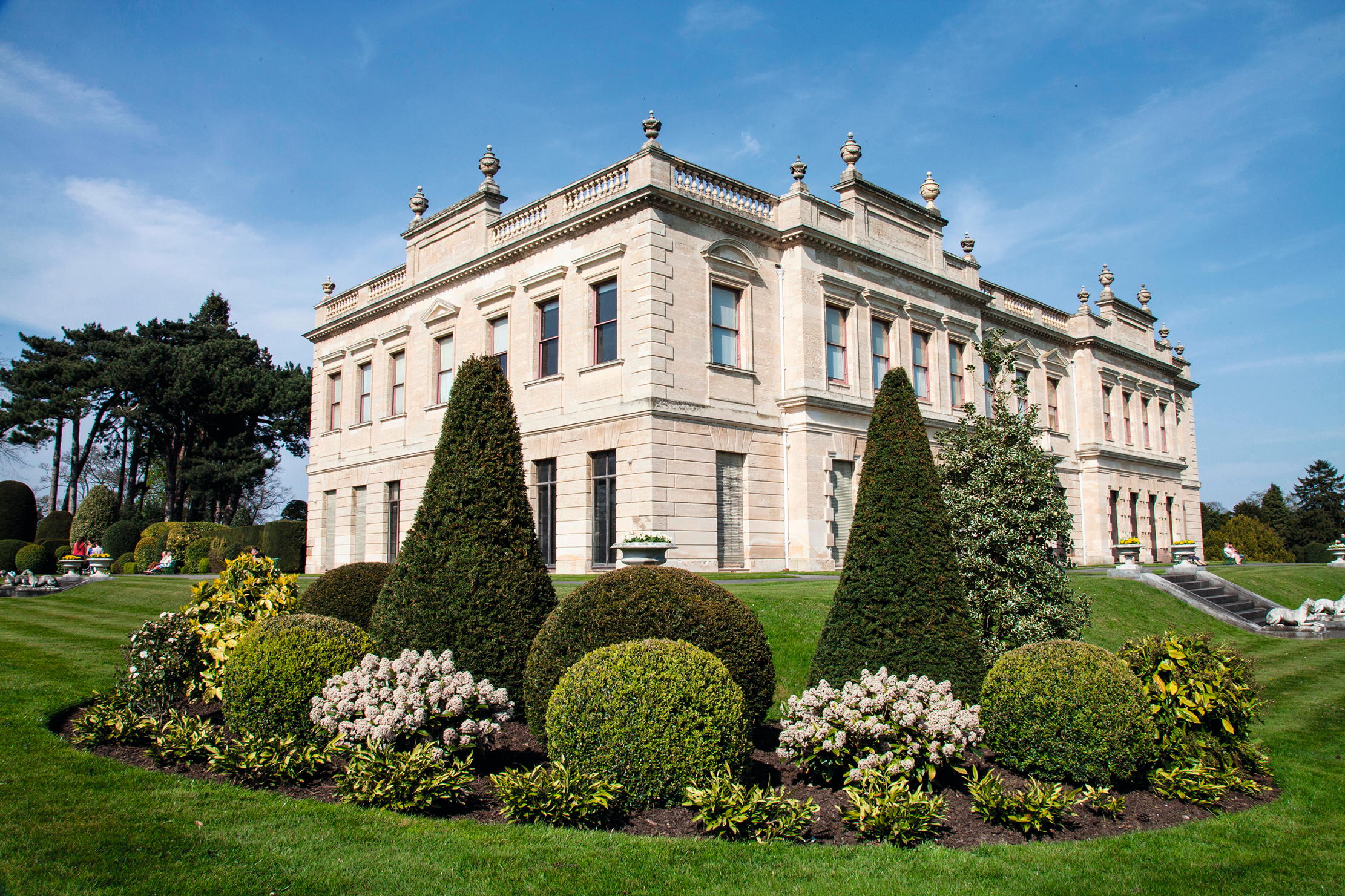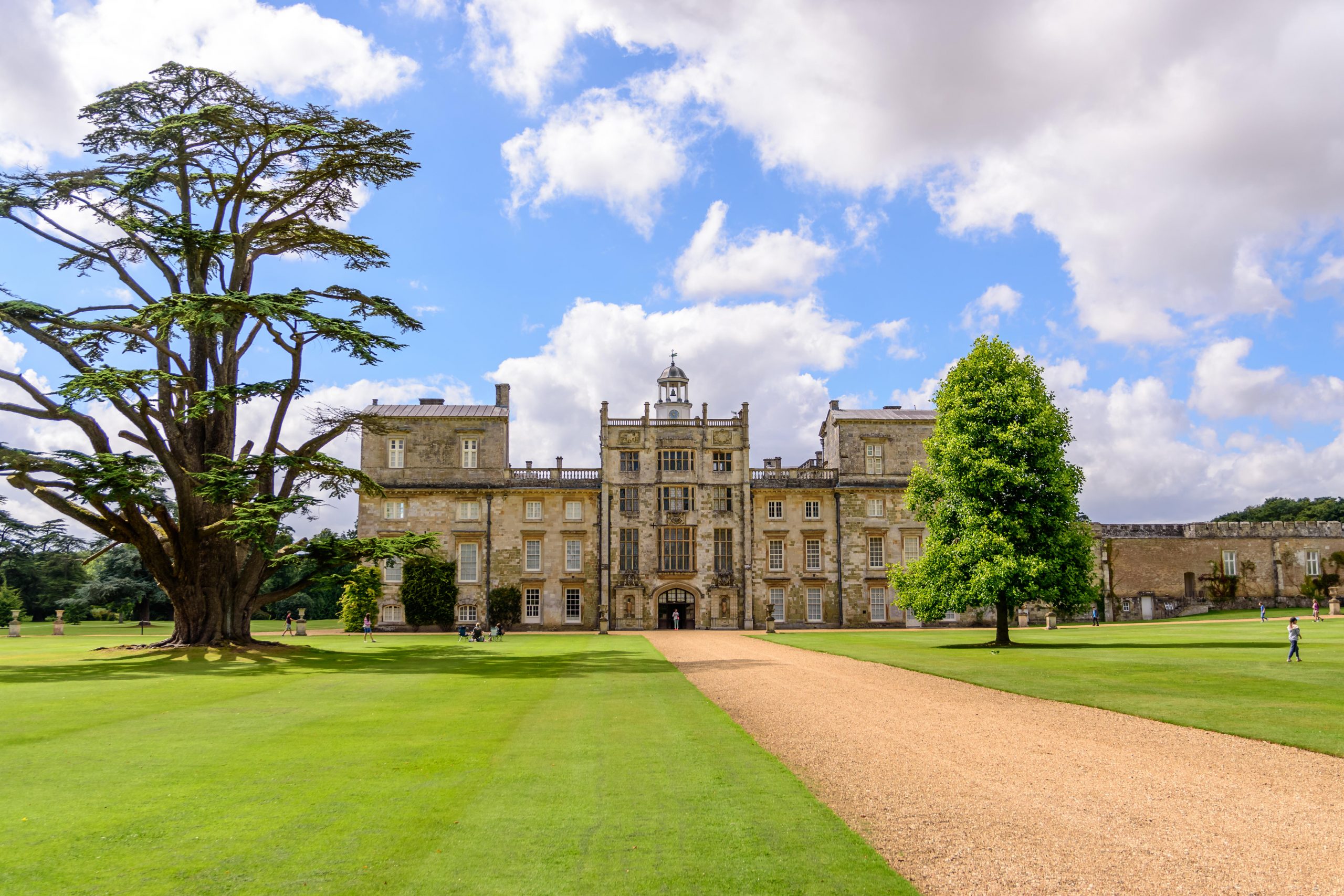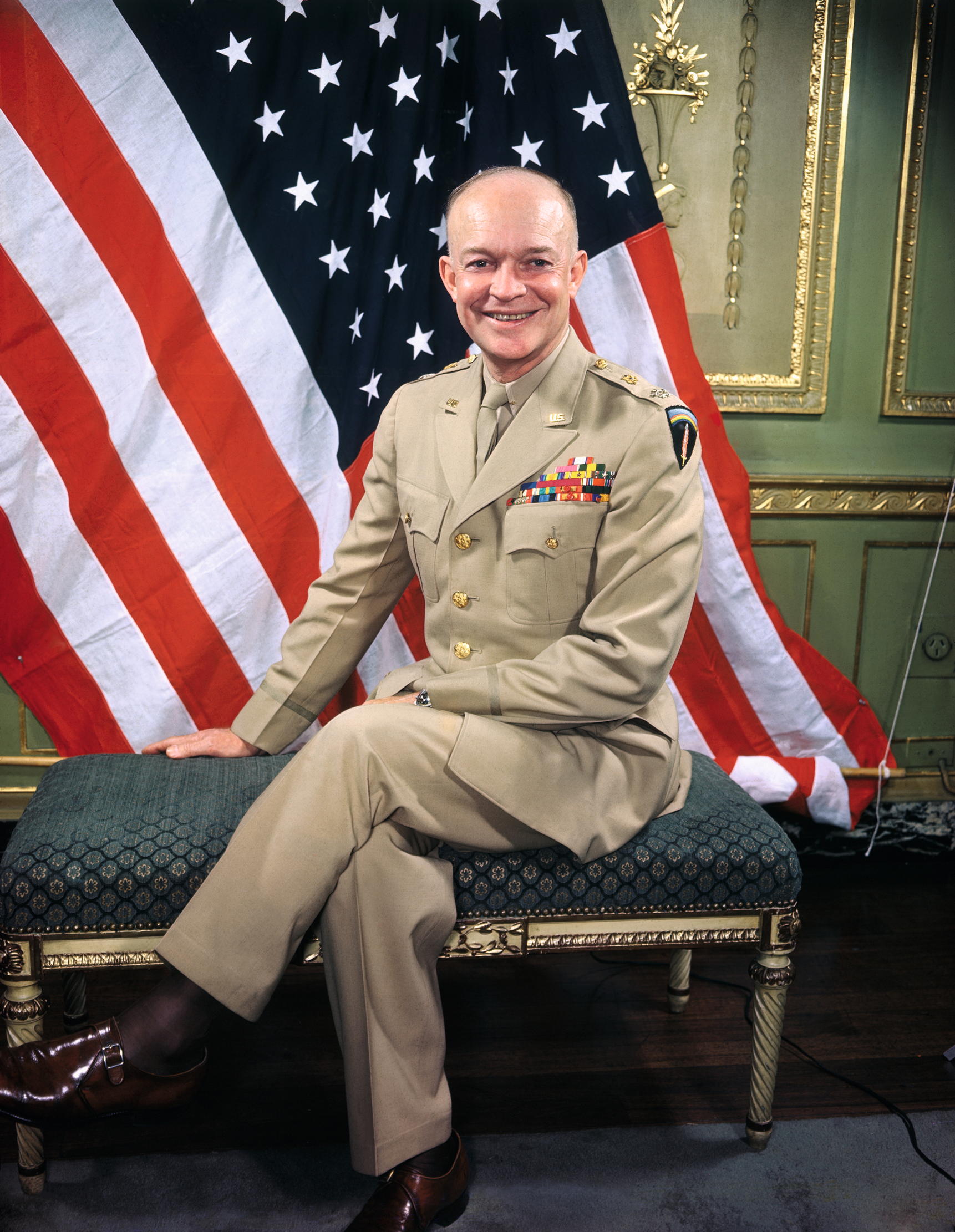How the country houses of Britain proved perfect for the Allied Forces to get ready for D-Day
Country houses great and small were indispensable to D-Day preparations, with electricity and sanitation, well-stocked wine cellars, countesses to run the canteens and antique furniture to feed the stoves, says Allan Mallinson.


As day broke on June 5, 1944, Gen Dwight D. Eisenhower, the Supreme Allied Commander for Operation Overlord, the invasion of occupied Europe, was driving to Southwick House near Portsmouth from what he called his ‘sharpener camp’ the other side of the park — the tents and caravans from which he would command in Normandy. The landings should have begun that morning, but he’d postponed them because of foul weather. The evening before, his chief meteorologist, Group Capt James Stagg, had forecast a change and ‘Ike’ said he would take the final decision at his morning meeting. Yet now, with lashing rain and ‘a wind of almost hurricane proportions shaking and shuddering’, he wondered why he was bothering.
There was a fire burning in the grate, coffee on a sideboard and his subordinate commanders gathered ready: Admiral Sir Bertram Ramsay, Gen Sir Bernard Montgomery and Air Chief Marshal Sir Trafford Leigh-Mallory. Then, as Ramsay put it afterwards, ‘the prophets came in smiling’: Stagg said that the predicted high pressure was holding and even building. Eisenhower asked his subordinates for their opinion. All said ‘go’. He paced up and down for what seemed an age, drawing heavily on his cigarette: ‘OK, I don’t like it, but we’ll go on June 6.’

The ‘Crusade in Europe’, as Eisenhower dubbed it, was at last underway, launched from the hall of a modest-sized Georgian house requisitioned by the Royal Navy. It had all begun in 1937. With war looking increasingly likely, the Office of Works (renamed the Ministry of Works from 1940) was tasked in secret with setting up a register of accommodation for both military and non-military use. The Rating and Valuation Act of 1925 meant that every building and portion of land in the country had been assessed and the valuers had done their survey thoroughly, down to the last sink in the butler’s pantry. The register was soon ready.
When war broke out in 1939, Southwick was but one of many hundreds of country houses of all sizes progressively requisitioned by the three services. They had the facilities for the proliferation of the new headquarters, specialist units and training establishments: large rooms, electricity, telephone lines, accommodation, kitchens, running water and sanitation. Their grounds offered seclusion and better security, space for additional hutting to house the overflow of staff officers, signallers, clerks and fighting men, as well as space for vehicles and training. The inside of Southwick House was a good fit for D-Day’s HQ, but it was its park that made it practicable.
The Royal Navy and Royal Air Force had well-developed plans for requisitioning. Amport House in Hampshire, for example, was immediately taken over as headquarters of RAF Maintenance Command. Charles Sofer Whitburn, its owner, left behind his entire wine cellar as a patriotic gesture. However, the army’s role in a future war had been uncertain. An expeditionary force was hastily assembled and sent to France. With much vacated barrack space, therefore, the mobilisation of the Territorials and call-up for training of fighting-age men did not place as much demand on the register. However, the evacuation from Dunkirk in June 1940 of some 350,000 British and French troops certainly did — unexpectedly and at very short notice.

At Brodsworth Hall in South Yorkshire, 20-year-old Pamela Grant-Dalton’s parents were away when two officers arrived to inform them that the house would be needed for the headquarters of the 44th (Home Counties) Division. She offered them a drink enthusiastically. On his return, her father, a decorated veteran of the First World War, had ‘a hissy fit,’ said Pamela. However, within days, the family was living equably side by side with the headquarters officers; the grounds and outbuildings were home to several hundred troops. A month later, the divisional commander invited the Grant-Daltons to a drinks party in their drawing room, together with the staff of the 1st Corps at nearby Hickleton Hall, requisitioned from Lord Halifax, the Foreign Secretary.
As the RAF’s Fighter Command battled with the Luftwaffe, the army braced itself to repel invasion. Troops poured into East Anglia, the Home Counties and towards the south coast, with the two principal headquarters, now massively expanded, having to find larger accommodation. Eastern Command left Hounslow for the Wernher family’s estate at Luton Hoo in Bedfordshire and Southern Command, previously occupying two adjacent houses in Salisbury, Wiltshire, took over nearby Wilton House, seat of the Earls of Pembroke, with Nissen huts soon filling the grounds of both. At Wilton, the estate office became a canteen, run by Lady Pembroke. Eventually, the tramp of army boots was too much for the grand Gothic staircase, which gave way with a resounding crash one morning.
Exquisite houses, the beauty of Nature, and how to get the most from your life, straight to your inbox.

Yet, even as the Battle of Britain raged, Winston Churchill was demanding offensive action. Besides setting up the Special Operations Executive to ‘set Europe ablaze’, he wanted ‘commandos’ to begin raiding occupied Europe. Eventually, Achnacarry Castle and estate in the Scottish Highlands was requisitioned from the chief of Clan Cameron to be their training centre and the commandos would play a prominent role in Overlord. The unforgiving terrain was ideal for training and far enough away from prying eyes to develop special tactics and techniques.
Then came the Americans. In December 1941, the Japanese attacked the US Pacific Fleet at Pearl Harbor and Hitler declared war soon after. Britain and America were now formally allies and, at the ‘Arcadia’ conference in Washington in January 1942, President Roosevelt agreed to Churchill’s proposal to deal with Germany first. Within a month, an advance party of the US Army Air Forces’ VIII bombardment command arrived at RAF High Wycombe, Buckinghamshire, headquarters of Bomber Command, to take over Victorian Daws Hill House and park from Wycombe Abbey School. The first operational squadrons began arriving in June and a massive airfield-building programme began in East Anglia.

Some houses did relatively well out of it all. At the neo-Jacobean Lynford Hall in Norfolk, the Americans installed central heating. Others, no matter what the nationality of the occupants, were less fortunate, especially in winter when park trees, antique furniture, panelling and carved staircases were fed into fireplaces and stoves. ‘Wonderful old place in its way,’ the quartering officer says of Brideshead Castle in Evelyn Waugh’s Brideshead Revisited: ‘Pity to knock it about too much… destructive beggars, soldiers are!’ Some of the lesser houses complained that the greater ones, such as Chatsworth in Derbyshire and Castle Howard, North Yorkshire, had done deals with schools in order to avoid being requisitioned for ‘destructive beggars’.
With half a million British troops preparing for Operation Overlord and more than two million American servicemen passing through Britain during the war, the destruction was sometimes structural and more permanent. The expanding Stanford battle area in Norfolk swallowed up six villages, including Buckenham Tofts — its neo-Classical house, remodelled by Samuel Wyatt for the Petre family at the time of Trafalgar, was so badly damaged that, in 1946, all but its stables had to be demolished.

The Guinness family’s Elveden Hall in Suffolk, occupied by the headquarters of the US 3rd Air Division, became a target for the Luftwaffe and was partly destroyed. In the months before D-Day, the newly arriving US armoured divisions needed to step up their live-firing training: Salisbury Plain was the obvious place, save for the village of Imber, which stood in the way.
In November 1943, the residents were told to leave by Christmas. On the final day of the notice period, Albert Nash, village blacksmith for more than 40 years, was found sobbing over his anvil. He died not long afterwards.

Meanwhile, the British 3rd Division, which was to spearhead the D-Day landings at Sword Beach, the easternmost and key landing zone, had moved to Inverness-shire. The Sherman tanks of the 13th/18th Royal Hussars had been specially adapted to swim 5,000 yards to the shore ahead of the infantry to give covering fire in the critical first minutes of the assault and the Moray and Dornoch firths were ideal for training. However, refining the battle plan needed peace and quiet, so the divisional and brigade staff took over Aberlour House on the Spey, a secluded mid-Victorian, neo-Classical country house described by one of the brigadiers, Errol Prior-Palmer, as being unusually warm, dry and with plenty of natural light. His own headquarters, at the castellated Moy Hall on the moors south of Inverness, had been anything but, reached only ‘over ice-bound roads and through snow drifts’. The professionals’ motto was always ‘any fool can be uncomfortable’.
In late May, the Hussars moved to Petworth Park in West Sussex to prepare for embarkation, albeit accommodated in Nissen huts and canvas, as the house itself was used for administration for three separate camps. Deer roamed freely and occasionally into the mess as venison. A few miles away, Goodwood was bracing itself for D-Day casualties, its public rooms subdivided into hospital wards.

The house with perhaps the greatest claim to D-Day honours, however, was in central London: 31, St James’s Square, SW1. In 1938, the Duke of Norfolk sold his 18th-century townhouse to developers and London County Council, regarding Norfolk House as ‘containing little work of architectural merit’, allowed demolition. In its place, a neo-Georgian office block was built, retaining the name. Close to the Admiralty, the War Office and the Air Ministry, it was requisitioned and, in 1942, became the planning centre for Operation Torch, the Allied invasion of Vichy French North Africa.
In April 1943, the Allied staff began developing the master plan for Overlord. Eisenhower returned from North Africa in January 1944 and worked on the plan at Norfolk House, until moving to Southwick in May.
After giving the order to ‘go on June 6’, Eisenhower went to his desk and drafted two communiqués for the following evening: one telling of successful landings, the other of failure. ‘Plans are worthless,’ he’d always said, ‘but planning is everything.’ Yet the plan would work magnificently. Country houses great and small had been indispensable to the planning and preparation for D-Day.
Allan Mallinson commanded the 13th/18th Royal Hussars (Queen Mary’s Own) from 1988 to 1991. His book ‘The Shape of Battle’ is published by Penguin Random House.
